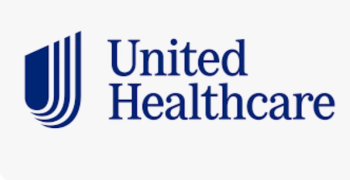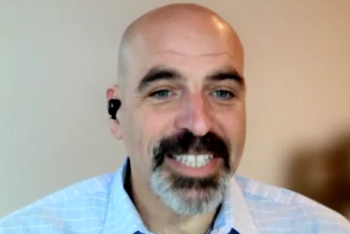
Plans take on risk with vulnerable populations
ACOs and health plans working with state governments soon will be challenged with taking on the risk and responsibility of managing the care of vulnerable populations.
With the expansion of Medicaid and dual eligible demonstrations, ACOs and health plans soon will be challenged with taking on the risk and responsibility of managing the care of vulnerable populations. This includes 10 million dual eligibles with over $300 billion annually in healthcare costs.
While being able to effectively care for vulnerable populations is crucial, discovering the best ways to reach and engage members is the primary challenge. All too often in poverty, homeless and suffering from mental health issues, vulnerables may be hard to locate and difficult to engage because of cultural and social barriers, illiteracy and lack of education.
Managed Medicaid organizations and states need the capacity to provide broad care coordination, as well as long-term support and services that address a high-density of complex medical, psychosocial, functional and behavioral issues.
Engaging Vulnerables
Locating members requires a range of activities, from sifting through claims and other data sources for the latest address on record, to speaking with people who might know where the member currently lives. Programs should stay up to date with the latest phone search engine technologies, as 80% of this population relies on mobile or smart phones to stay connected within their communities, and for Internet access, which they could not afford otherwise.
Even so, other measures will need to reach those without phones or who fail to respond to telephone outreach.
Many managed Medicaid and state organizations are partnering with community non-profits and churches to implement a “feet on the street” approach that involves finding identified members in their neighborhoods and talking with them face to face where they reside. What makes this approach powerful is that community organizations identify healthier members of the community who are willing to volunteer their time for training and outreach, to knock on the doors and have the conversations that lead to successful engagement. For instance, in ethnic or immigrant communities, multi-lingual volunteers who speak English act as translators to educate the members regarding their Medicaid benefits and services available to them.
Health programs focused on reaching this population could also offer the following:
- Free mobile phones for indigent families to make it easy for them to stay in touch with their care providers;
- Multimodal approach for enrollment or engagement-whether text, telephone or “at home” services;
- Cash incentives in accordance with state mandates to get people to participate in lifestyle management programs for weight management and smoking cessation;
- In-kind incentives that have meaning to members, such as baby strollers for Medicaid moms or pediatric camps for children with diabetes; and
- Online information written at the appropriate literacy level.
Caring for Vulnerables
Providing optimum care to vulnerables includes the capacity to administer a large number of health risk assessments (HRAs) to quickly identify those at the highest risk with the greatest clinical needs driving the majority of healthcare costs. Community organizations can help administer HRAs, but advanced technologies are required to synthesize and analyze the data so that managed Medicaid organizations can effectively target their sickest members.
Other best practices include:
- Development of care plans that meet each member’s individual needs. Experienced clinicians should spend time with members to create a plan and guide them to the most appropriate healthcare services as soon as can be arranged, as well as community resources that might be needed to address issues like homelessness, substance abuse or mental illness.
- Engagement with healthy behavior change. Vulnerables have many psychosocial issues to contend with, such as low incomes, poor housing and lack of access to healthy food. Clinicians trained to be culturally sensitive and to communicate with those at a lower literacy level can guide members to community and other resources, as well as help each person identify personal motivators for engaging in healthy behaviors, such as the desire to play a sport, learn a skill, or increase income. The focus should be on helping each person determine what poor lifestyle habits may stand in the way of their achieving well-being, and then offering guidance for setting realistic, manageable milestones to achieve their personal goals.
- Clinical care coordination focused on appropriate utilization of healthcare services. Vulnerables at high risk or with chronic conditions are among the casualties of a fragmented system of care characterized by lack of care coordination, duplicate and unnecessary utilization and waste. Programs should provide an interdisciplinary care team approach with a primary care manager who coordinates each member’s care across multiple care providers to ensure that all care providers have the same information and can work together to make optimal healthcare decisions that result in the best health outcomes possible.
- Specialized services for members with the greatest clinical needs and highest costs. As health plans cover more of the disadvantaged population, it will become increasingly important to provide intensive case management programs to improve clinical outcomes and reduce healthcare costs for the sickest and costliest members. Programs should be available for high-risk pregnancies, NICU babies, complex and multiple chronic conditions and cancer.
- Integrated care for members with serious mental illness (SMI). Those with serious mental illnesses such as schizophrenia, bipolar disorder and major depression often have comorbid chronic medical conditions that are poorly treated or untreated. This reality leads to SMI patients, as a group, dying 25 years earlier than the rest of the population. Consequently, SMI individuals need their medical and behavioral healthcare services to be well integrated and coordinated.
- Maternity and high-risk pregnancy management services for high-risk Medicaid moms. New mothers covered by Medicaid are poor, lack access to healthcare, and often suffer from poor nutrition and other unhealthy lifestyle behaviors that place them at risk for an adverse pregnancy outcome. Considering that 60% of NICU admissions last about 20 days (averaging between $40,000 and $80,000), Medicaid has a tough battle to wage that is only going to worsen as more new mothers are covered. While Medicaid experiences 40% higher rates of NICU use, reducing those costs could save $400 million a year.
- Long-term support and services. A vast majority (89%) of Americans over age 50 want to remain in their own homes as long as they can, but may need outside support. Health plans will need to provide comprehensive assessments to influence care plan development to ensure individuals at home receive appropriate support services and that those who can no longer take care of themselves are admitted to appropriate facilities.
- Fully integrated system of care that enables members to take greater control of their health. The better Medicaid can connect members with their physicians, the greater the clinical and financial outcomes. This is where advanced technologies can make a difference. Informed healthcare decisions that result in better health outcomes and lower healthcare costs will be most efficiently achieved from the implementation of total care management systems that connect networks of physicians with their patients through electronic medical records, electronic care gap messaging services, at-home remote monitoring devices and care management services via secure health information exchanges.
Whatever is ultimately done, the healthcare industry needs to continue seeking innovative ways to reach and engage those with limited resources to make healthy behavior changes that improve their health and overall quality of life.
Norm Ryan, MD, is senior vice president of health intelligence for Alere Health.
Newsletter
Get the latest industry news, event updates, and more from Managed healthcare Executive.






















































